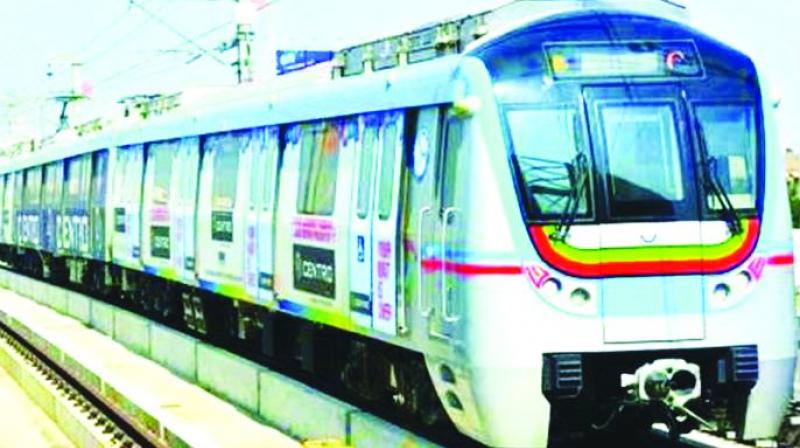Officials blame Hyderabad weather for Metro snags
Services were interrupted due to a hoarding collapse a couple of weeks ago, power tripping hit the operation on Friday and technical snags on Tuesday.

Hyderabad: Disruption of Metro services on a regular basis has become the norm these days. In the last three weeks, the Metro was put on hold more than three times.
Services were interrupted due to a hoarding collapse a couple of weeks ago, power tripping hit the operation on Friday and technical snags on Tuesday.
The Hyderabad Metro Rail Authorities said the sophisticated signalling system was partly to blame as Hyderabad's climate cannot support the highly sophisticated system.
On Tuesday evening, the Metro Rail was halted for 12 minutes near the state Assembly, 15 minutes from Moosarambagh, and for more than 20 minutes near Chaitanyapuri.
V. Swathi, a commuter travelling from Khairatabad to Chaitanyapuri, said that despite the one-hour delay, Metro staff did not give any reason for the halt. She said most of the passengers got down and chose other means of transport to reach their destinations.
Echoing her concern, commuter M. Manoj said that the train speed dropped drastically and it took more than one hour to reach Dilsukhnagar when it usually takes 20 minutes from Khairatabad Metro Station. He said that due to cost cutting by HMRL, Metro stations have become dirty and commuters have been the sufferers.
HMRL managing director N.V.S. Reddy said that unlike other Metros across the globe, in Hyderabad problems have been minimal. He said most of the interruptions occurred due to external factors such as pollution, power interruption, fall of hoardings etc. Mr Reddy said since most of the equipment was imported, it cannot sustain in Indian conditions. “However, we are trying to upgrade it to local conditions to minimise Metro interruptions.”
He explained, “Last night one train going towards LB Nagar developed a signalling problem. Because of very high safety standards in Communications Based Train Control (CBTC) technology, automatic cut-off happened and all signals turned red. The train had to be run in ‘restricted mode’ at 25 kmph and each red signal had to be manually switched off after ensuring track clearance and safety.”
Reddy said that this had a cascading effect on the other trains as there were many trains running on the Miyapur-LB Nagar Corridor-I.
“I have advised L&T to request Thales, which supplied the CBTC signalling and train control system, to make necessary modifications to the sophisticated system to suit India's rugged conditions and pollution levels,” Mr Reddy said.

